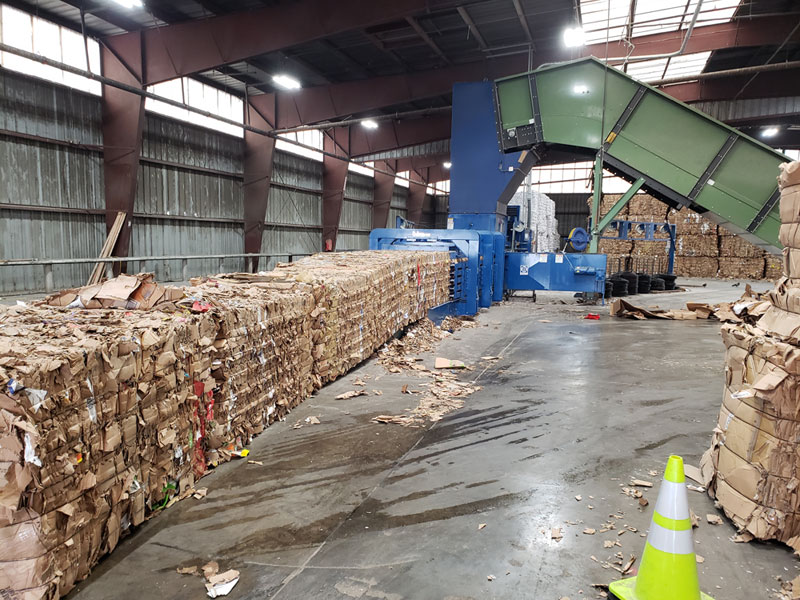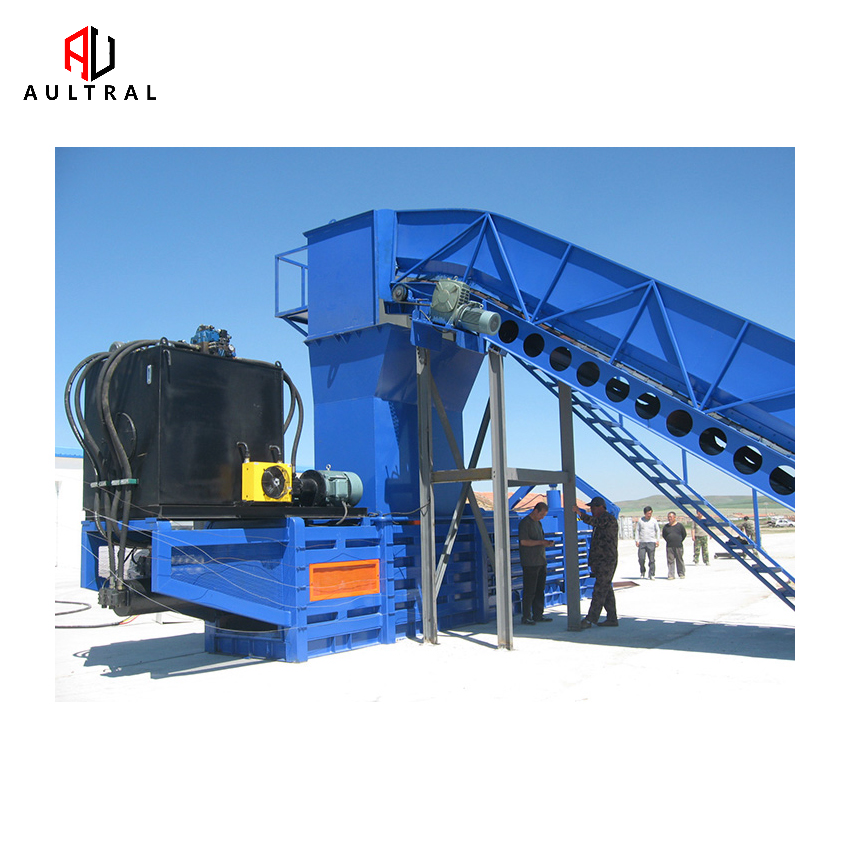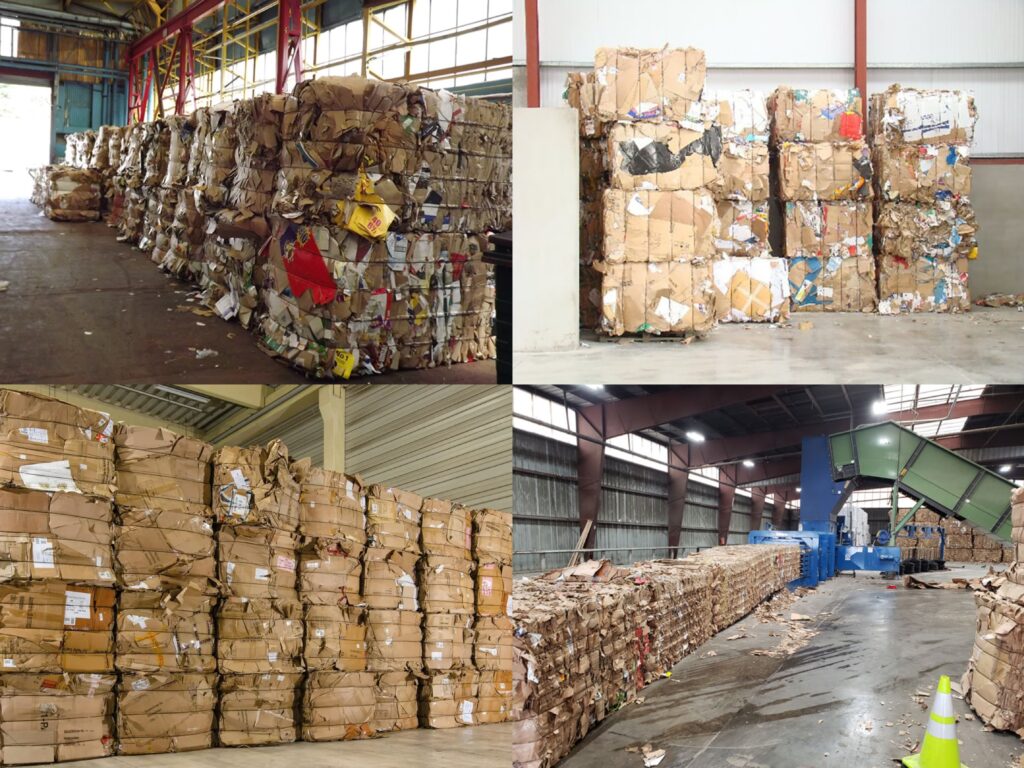In the recycling and packaging industries, handling large volumes of waste efficiently is a major challenge. One of the most effective machines designed to solve this problem is the 120T Automatic Horizontal Baler. With its powerful hydraulic system, high automation, and continuous feeding design, this baler ensures maximum productivity while reducing labor costs. It is widely used in recycling centers, warehouses, printing houses, supermarkets, and manufacturing facilities that generate large amounts of recyclable waste such as paper, cardboard, plastics, and light metals.

What is a 120T Automatic Horizontal Baler?
A 120T Automatic Horizontal Baler is a hydraulic baling machine designed to compress recyclable materials into dense, uniform bales. The “120T” refers to the machine’s hydraulic pressing force of 120 tons, which provides strong compaction suitable for medium to large-scale operations. Unlike vertical balers, the horizontal design allows continuous feeding via conveyor belts, air systems, or manual feeding, making it ideal for facilities with high waste output.
Key Features of the 120T Automatic Horizontal Baler
-
Strong Hydraulic System – 120-ton hydraulic pressing force ensures high-density bales.
-
Fully Automatic Operation – Equipped with PLC control, automatic feeding, compressing, and bale tying.
-
Continuous Feeding – Compatible with conveyors and air cyclone systems for nonstop production.
-
Versatile Applications – Suitable for paper, cardboard, cartons, PET bottles, plastic film, and light metals.
-
Space-Saving Design – Horizontal structure allows easy integration into production lines.
-
Durable Components – High-quality wear-resistant steel ensures long service life.
-
Energy Efficiency – Designed for high output with lower energy consumption.
Applications of the 120T Automatic Horizontal Baler
-
Recycling Centers: Compressing waste paper, cardboard, and plastics.
-
Printing Houses: Handling trim waste and paper scraps efficiently.
-
Warehouses & Logistics: Compacting packaging materials for easy storage.
-
Supermarkets & Retail Chains: Managing large quantities of packaging waste.
-
Manufacturing Plants: Recycling plastic film, PET bottles, and other industrial scraps.
Advantages of Using a 120T Automatic Horizontal Baler
-
Labor Saving: Full automation reduces manual handling and operating costs.
-
Improved Logistics: Dense, uniform bales reduce transportation costs.
-
Operational Safety: Equipped with safety sensors and emergency stop functions.
-
High Productivity: Continuous feeding system supports large-scale recycling.
-
Environmental Contribution: Promotes recycling and reduces landfill pressure.
Technical Parameters of 120T Automatic Horizontal Baler
| Model | Pressing Force (Ton) | Bale Size (L×W×H, mm) | Bale Weight (kg) | Capacity (tons/hour) | Main Motor Power (kW) | Bale Tying System | Machine Size (L×W×H, mm) | Weight (kg) |
|---|---|---|---|---|---|---|---|---|
| 120T-AHB-1 | 120 | 1100×800×(300–1200) | 350–550 | 5–7 | 45 | Automatic Wire | 9300×2800×3200 | 19000 |
| 120T-AHB-2 | 120 | 1200×900×(300–1300) | 400–600 | 6–8 | 55 | Automatic Wire | 9800×3000×3400 | 21000 |
| 120T-AHB-3 (Heavy Duty) | 120 | 1300×1100×(400–1400) | 500–700 | 7–9 | 55+11 | Automatic Wire | 10500×3200×3600 | 23000 |
Note: Parameters may vary depending on customization.
How to Choose the Right 120T Automatic Horizontal Baler
When selecting the right baler for your operation, consider:
-
Material Type: Paper, plastic, or mixed recyclables.
-
Output Volume: Higher throughput requires larger bale chambers.
-
Available Space: Ensure machine dimensions fit your facility layout.
-
Automation Level: Choose between semi-automatic or fully automatic models.
-
Budget & ROI: Balance machine investment with long-term savings in labor and transport.
The 120T Automatic Horizontal Baler is an indispensable machine for medium and large recycling facilities. Its combination of high hydraulic power, fully automated operation, and continuous feeding design provides maximum efficiency and cost savings. By producing dense, uniform bales, it reduces transportation and storage costs while promoting sustainable recycling practices.


